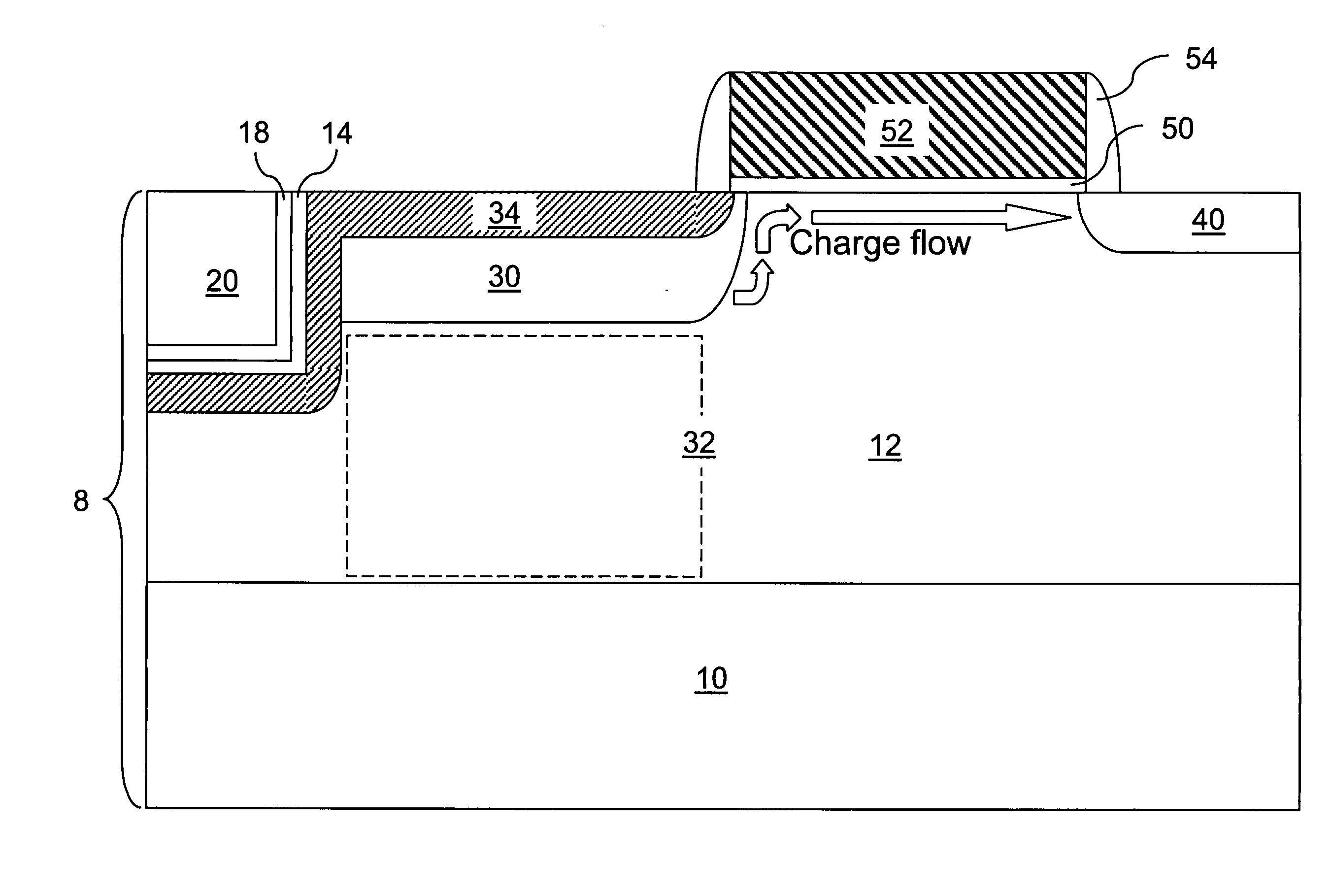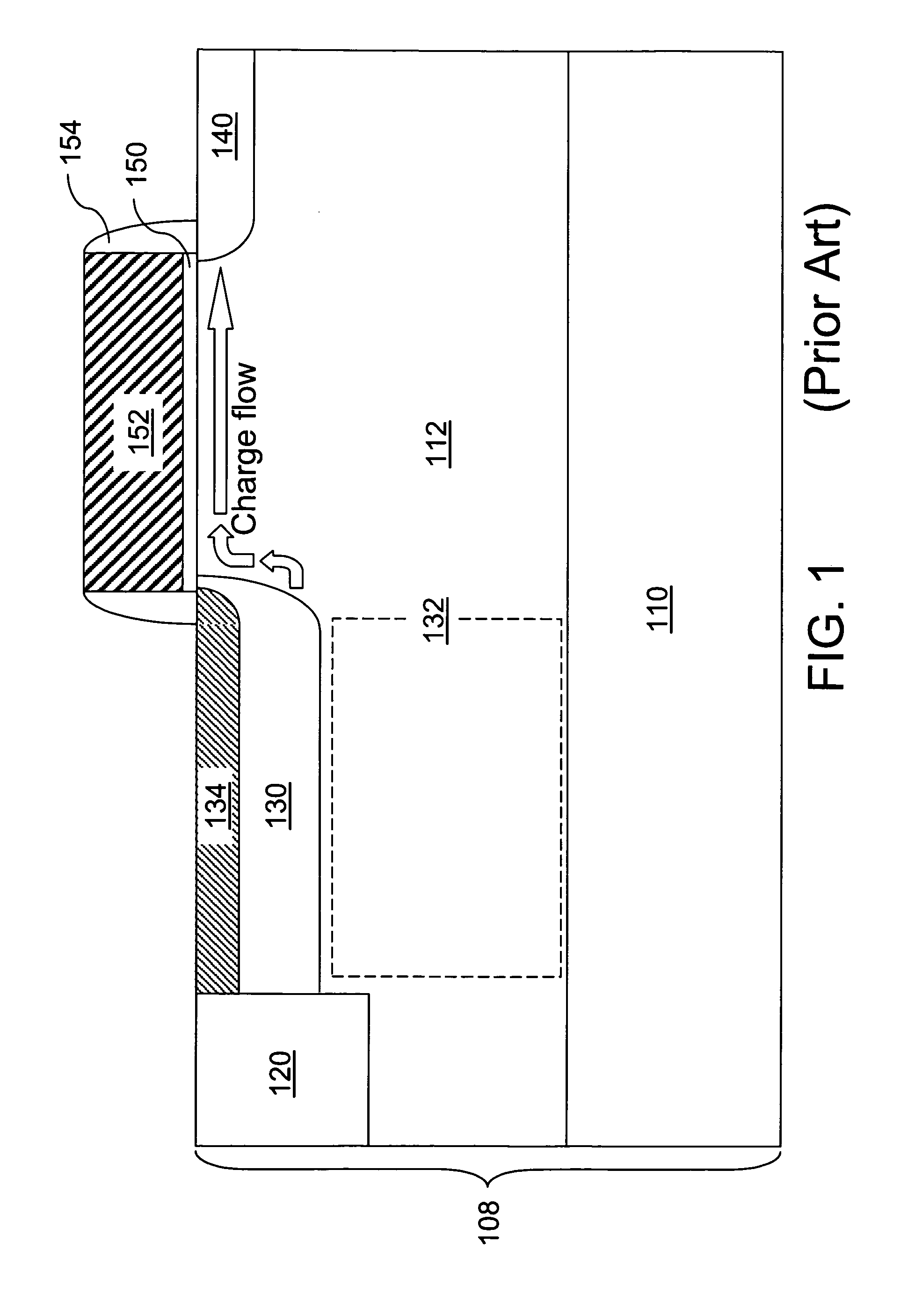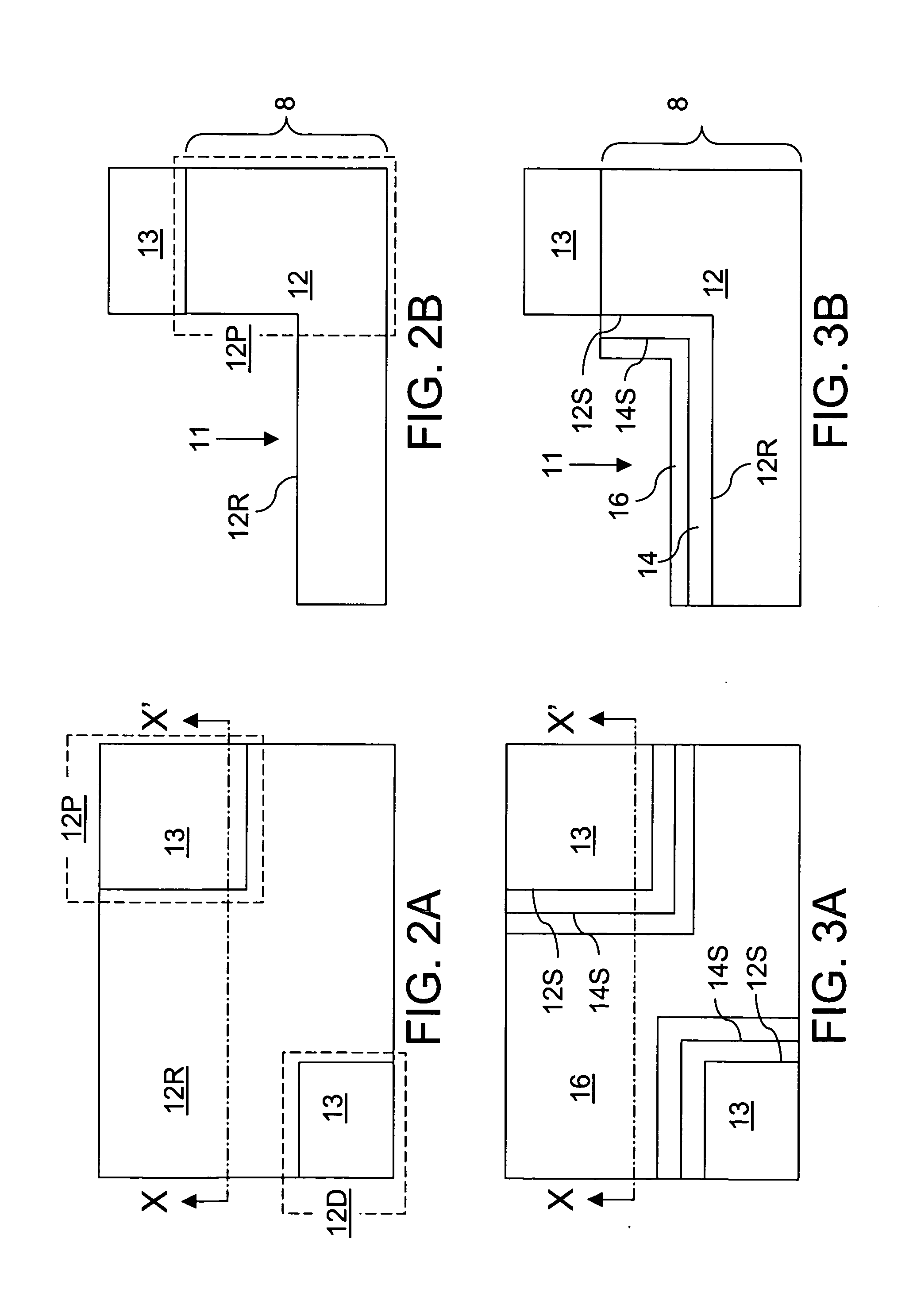CMOS image sensor with reduced dark current
a technology of image sensor and dark current, applied in the field of semiconductor image sensor structure, can solve the problems of reducing the dynamic range, reducing the charge capacity, and reducing the image quality of the cmos image sensor, and achieve the effect of enhancing the performance of the photodiode and reducing the dark curren
- Summary
- Abstract
- Description
- Claims
- Application Information
AI Technical Summary
Benefits of technology
Problems solved by technology
Method used
Image
Examples
first embodiment
[0064]Referring to FIGS. 2A and 2B, a first exemplary semiconductor structure according to the present invention comprises a semiconductor substrate 8 which includes a p− doped semiconductor layer 12 containing a shallow trench 11. A dielectric pad layer 13 is deposited on a top surface of the semiconductor substrate 8 and is lithographically patterned. The pattern in the dielectric pad layer 13 is transferred into the p− doped semiconductor layer 12 to form the shallow trench 11. The dielectric pad layer 13 comprises a dielectric material such as silicon nitride or silicon oxide. The dielectric pad layer 13 may also comprise a stack of multiple dielectric material layers such as a silicon oxide layer and a silicon nitride layer. The thickness of the dielectric pad layer 13 may be from about 50 nm to about 300 nm, and typically from about 100 nm to about 200 nm, although lesser and greater thicknesses are also contemplated herein. The dielectric pad layer 13 may be formed by low pre...
second embodiment
[0077]Referring to FIG. 8, a second exemplary semiconductor structure according to the present invention incorporates the structural and compositional features of the first exemplary semiconductor structure, which include a p− doped semiconductor layer 12, a surface pinning layer 34, a carbon-containing semiconductor layer 14, a dielectric layer 18, and a shallow trench isolation structure 20. The second exemplary semiconductor structure further comprises an n-type charge collection well 30, which is formed directly underneath the surface pinning layer 34 by a masked ion implantation of n-type dopants. The dopant concentration of the n-type charge collection well 30 may be from about 1.0×1016 / cm3 to about 1.0×1021 / cm3, and typically from about 1.0×1017 / cm3 to about 1.0×1019 / cm3, although lesser and greater dopant concentrations are explicitly contemplated herein also. The p− doped semiconductor layer 12 includes a p-type well 32 located directly beneath the n-type charge collection ...
fifth embodiment
[0096]Referring to FIG. 19, a fifth exemplary semiconductor structure according to the present invention incorporates the structural and compositional features of the fourth exemplary semiconductor structure, which include a p− doped semiconductor layer 12, a surface pinning layer 34, a carbon-containing semiconductor layer 15, a dielectric layer 18, and a shallow trench isolation structure 20. The second exemplary semiconductor structure further comprises an n-type charge collection well 30, which is formed directly underneath the surface pinning layer 34 by a masked ion implantation of n-type dopants. The dopant concentration of the n-type charge collection well 30 may be from about 1.0×1016 / cm3 to about 1.0×1020 / cm3, and typically from about 1.0×1017 / cm3 to about 1.0×1019 / cm3, although lesser and greater dopant concentrations are explicitly contemplated herein also. The p− doped semiconductor layer 12 includes a p-type well 32 located directly beneath the n-type charge collection...
PUM
 Login to View More
Login to View More Abstract
Description
Claims
Application Information
 Login to View More
Login to View More - R&D
- Intellectual Property
- Life Sciences
- Materials
- Tech Scout
- Unparalleled Data Quality
- Higher Quality Content
- 60% Fewer Hallucinations
Browse by: Latest US Patents, China's latest patents, Technical Efficacy Thesaurus, Application Domain, Technology Topic, Popular Technical Reports.
© 2025 PatSnap. All rights reserved.Legal|Privacy policy|Modern Slavery Act Transparency Statement|Sitemap|About US| Contact US: help@patsnap.com



